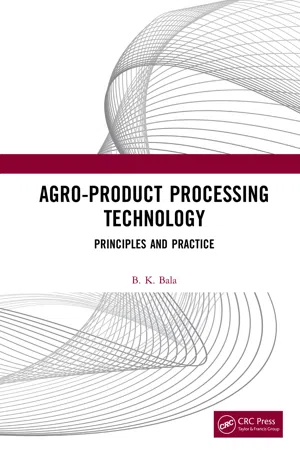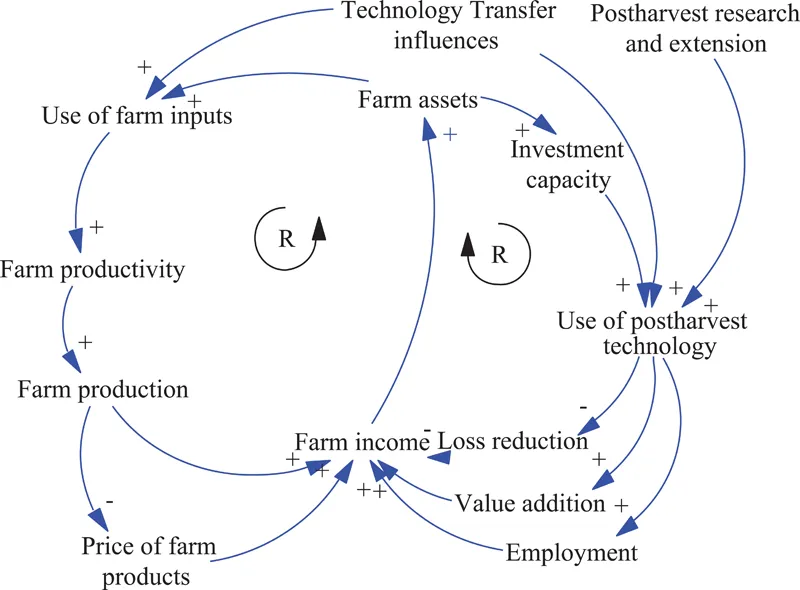
- 400 pages
- English
- ePUB (mobile friendly)
- Available on iOS & Android
About this book
Global food security is a challenging issue. Meeting the food and nutritional requirements of the world has become an issue for national policymakers and is of public concern. There is a need to enhance agricultural production, as well as, to reduce postharvest loss, improve the quality of processed products, and add value to products to make more quality food available. Agro-product processing technology plays a major role to reduce post-harvest losses, improve the quality of processed products, and add value to the products. It also generates employment and ultimately contributes to food security.
Features:
- Covers a wide spectrum of agro-product processing technology
- Explains the principles and practices of agro-product processing technology with many worked examples to quickly teach the basic principles through examples
- Contains examples from different operations on current problems to show the wide applications of the principles of agro-product technology
- Includes process control and emerging technologies in agro-product processing such as energy and exergy analysis, neural network modeling, and CFD modeling
This book deals with physical and thermal properties, cleaning and sorting, drying and storage, parboiling and milling, by-product utilization, heating and cooling, refrigerated cooling, and cold storage. The most unique feature of this book is the machine vision for grading fruits, process control and materials handling, and emerging technologies such as neural network, finite element, CFD, and genetic algorithm.
Frequently asked questions
- Essential is ideal for learners and professionals who enjoy exploring a wide range of subjects. Access the Essential Library with 800,000+ trusted titles and best-sellers across business, personal growth, and the humanities. Includes unlimited reading time and Standard Read Aloud voice.
- Complete: Perfect for advanced learners and researchers needing full, unrestricted access. Unlock 1.4M+ books across hundreds of subjects, including academic and specialized titles. The Complete Plan also includes advanced features like Premium Read Aloud and Research Assistant.
Please note we cannot support devices running on iOS 13 and Android 7 or earlier. Learn more about using the app.
Information
1 | Introduction |
1.1 INTRODUCTION

1.2 IMPOTENCE OF POSTHARVEST TECHNOLOGY
Table of contents
- Cover
- Half Title
- Title Page
- Copyright Page
- Table of Contents
- Foreword
- Preface
- Author
- Chapter 1 Introduction
- Chapter 2 Physical, Thermal, and Chemical Properties of Food and Biological Materials
- Chapter 3 Cleaning, Grading, and Sorting
- Chapter 4 Psychrometry
- Chapter 5 Drying of Agro Products
- Chapter 6 Parboiling of Rice
- Chapter 7 Milling of Rice and Wheat
- Chapter 8 By-Product Utilization
- Chapter 9 Storage of Agro Products
- Chapter 10 Heating and Cooling of Agro Products
- Chapter 11 Refrigeration and Cold Storage
- Chapter 12 Separation
- Chapter 13 Materials Handling and Conveying
- Chapter 14 Process Dynamics and Control
- Chapter 15 Emerging Technologies
- Index